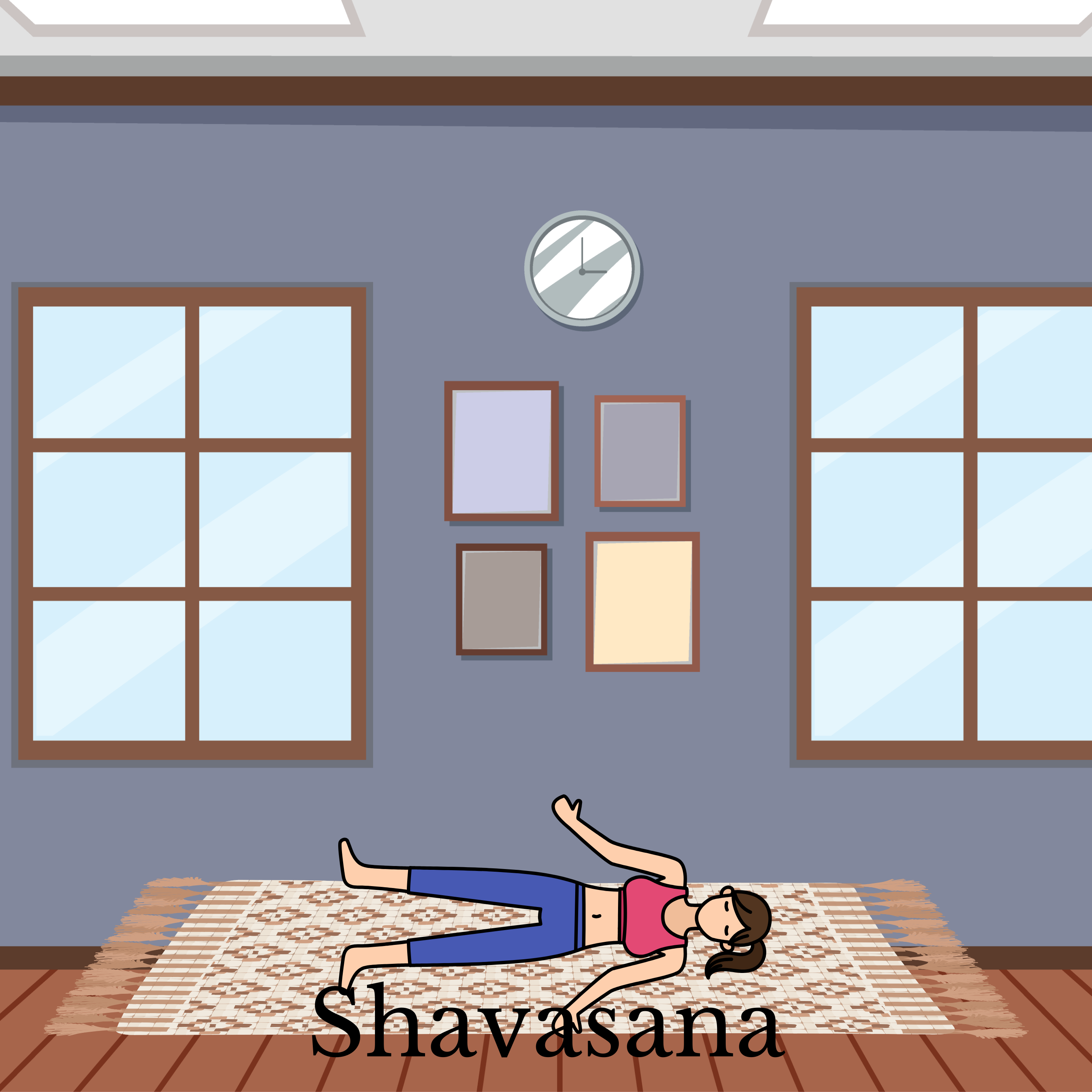Shavasana – The Ultimate Guide for Deep Relaxation & Stress Relief (2025)
Shavasana, or the Corpse Pose, is a fundamental yoga asana designed for deep relaxation, stress relief, and complete mental rejuvenation. Unlike other active poses, Shavasana focuses on stillness, mindfulness, and awareness of the body. It allows your body to recover from tension, release stress, and restore energy, making it one of the most important poses in any yoga routine.
Whether you are a beginner or advanced practitioner, incorporating Shavasana into your daily practice helps enhance mental clarity, improve sleep, and boost overall well-being.
For more detailed yoga poses, visit the Pillar Yoga Asanas Guide.
Health Benefits of Shavasana
Shavasana provides numerous physical, mental, and emotional benefits:
1. Deep Relaxation
The primary benefit of Shavasana is complete relaxation. By lying still and focusing on breathing, the body releases tension from muscles and joints.
2. Stress Relief
Practicing Shavasana reduces cortisol levels, which helps combat stress, anxiety, and mental fatigue.
3. Improved Sleep Quality
Shavasana before bedtime enhances sleep, helping those who struggle with insomnia or restless nights.
4. Mental Clarity and Focus
By calming the mind and enhancing mindfulness, Shavasana improves concentration, emotional stability, and mental clarity.
5. Lowers Blood Pressure
The relaxation response triggered by Shavasana can help lower blood pressure and improve cardiovascular health over time.
6. Enhances Recovery
After performing vigorous yoga asanas, Shavasana allows the body to rejuvenate and integrate the benefits of previous poses.
7. Boosts Overall Energy
Even 5–10 minutes of Shavasana restores energy, reduces fatigue, and revitalizes the body.
Affiliate Product: Yoga Mat for Comfortable Relaxation
Step-by-Step Guide to Performing Shavasana
Follow these steps to perform Shavasana correctly and maximize benefits:
-
Lie Flat: Begin by lying flat on your back on a comfortable yoga mat. Extend your legs naturally, slightly apart.
-
Position Your Arms: Place your arms at your sides with palms facing upward. Ensure your shoulders are relaxed.
-
Close Your Eyes: Gently close your eyes and focus on your breathing.
-
Release Tension: Gradually release tension from your head, neck, shoulders, arms, torso, and legs.
-
Deep Breathing: Inhale slowly and exhale deeply. Focus your awareness on each body part, letting go of stress.
-
Stay Still: Remain motionless for 5–15 minutes. Longer durations offer deeper relaxation.
-
Exiting the Pose: Slowly bring awareness back, wiggle fingers and toes, and roll to your right side before gently sitting up.
Pair Shavasana with Sarvanasana for Better Sleep for a full relaxation routine.
Tips for Beginners
-
Place a thin cushion or folded blanket under the head and knees for comfort.
-
Cover yourself with a light blanket if needed for warmth.
-
Focus on deep, mindful breathing; let thoughts pass without engagement.
-
Start with 5–10 minutes and gradually extend to 15–20 minutes.
-
Practice daily for maximum benefits.
Affiliate Product: Yoga Bolster & Blanket for Comfort
Common Mistakes to Avoid
-
Tensing muscles instead of relaxing fully.
-
Using an uncomfortable or hard surface.
-
Falling asleep (remain aware to benefit fully).
-
Moving abruptly when exiting the pose.
Precautions
-
Place support under knees for individuals with lower back pain.
-
Pregnant women should place a cushion under hips and knees.
-
Avoid practicing on slippery or uneven surfaces.
-
Consult a doctor if you have severe health conditions.
FAQs – Shavasana
Q1: What is Shavasana in yoga?
A: Shavasana, or Corpse Pose, is a relaxation asana designed to calm the mind, relieve stress, and rejuvenate the body.
Q2: How long should I practice Shavasana?
A: Beginners can start with 5–10 minutes. Advanced practitioners can extend to 15–20 minutes or more.
Q3: Can Shavasana improve sleep?
A: Yes, practicing Shavasana before bedtime promotes better sleep and helps manage insomnia.
Q4: Do I need props for Shavasana?
A: Props like bolsters, blankets, or cushions can increase comfort and enhance relaxation.
Q5: Is Shavasana suitable for all ages?
A: Yes, it is safe for beginners, seniors, and advanced practitioners with proper support.
Q6: Can Shavasana reduce anxiety?
A: Regular practice decreases cortisol levels and promotes deep relaxation, reducing anxiety and stress.
Q7: Should I practice Shavasana daily?
A: Yes, daily practice ensures better stress relief, improved sleep, and overall body-mind balance.
Recommended Products
-
Yoga Mat for Comfortable Relaxation – Cushioned mat for extended practice
-
Yoga Bolster & Blanket – Provides proper alignment support
-
Meditation Pillow – Enhances mindfulness during practice
Conclusion
Shavasana is an essential yoga pose for deep relaxation, stress reduction, and better sleep. Incorporating this pose into your daily routine restores energy, improves mental clarity, and promotes overall well-being. Using supportive props ensures maximum comfort and effectiveness.
-
Buy now: Yoga Mat for Comfortable Relaxation
-
Explore more yoga poses: Pillar Yoga Asanas

